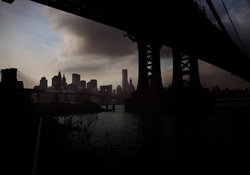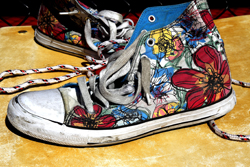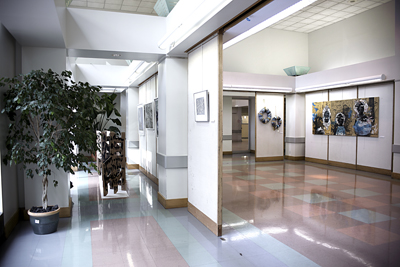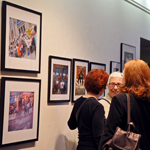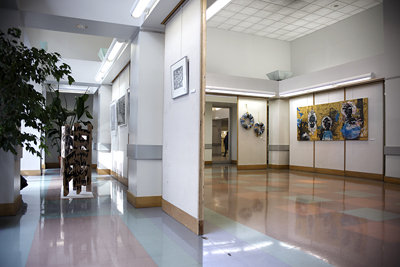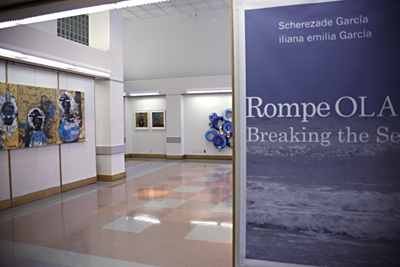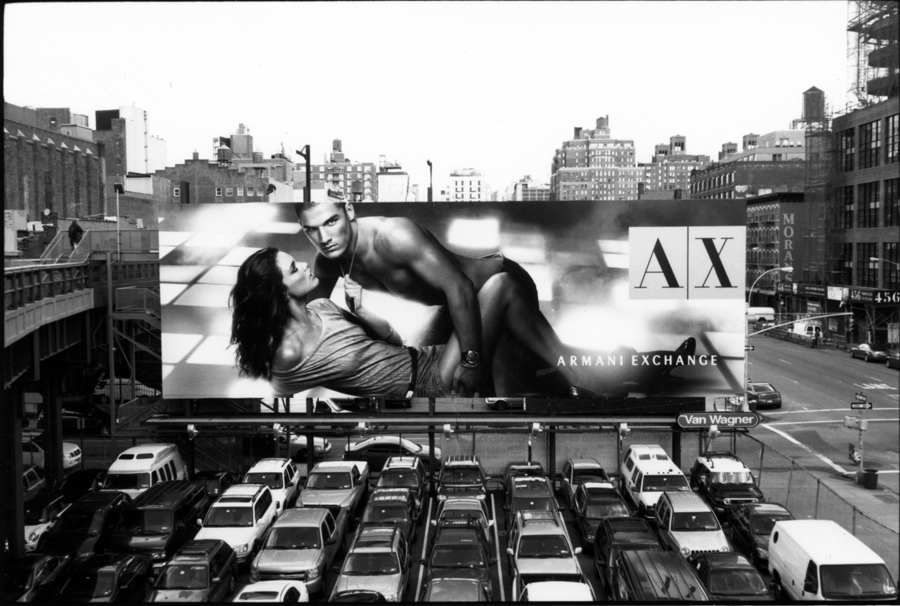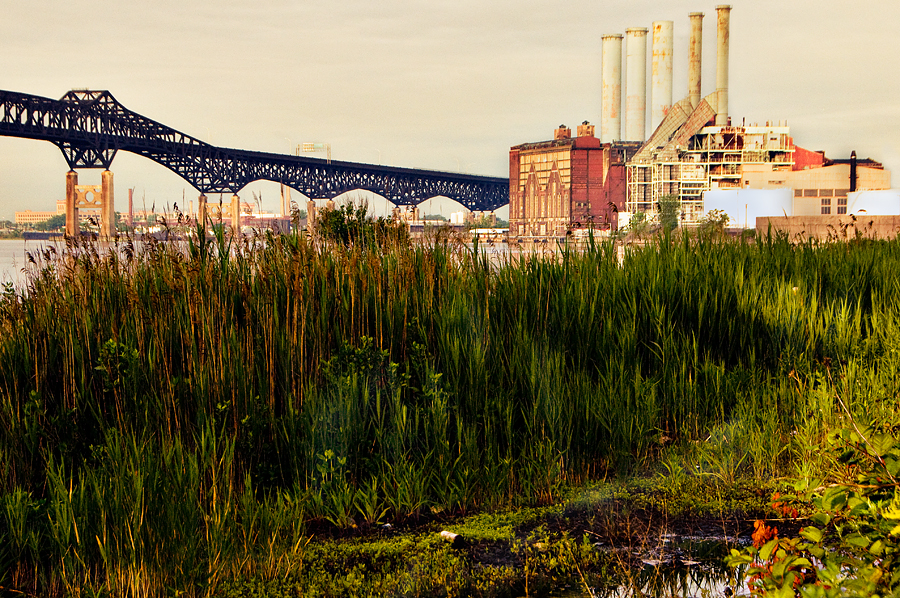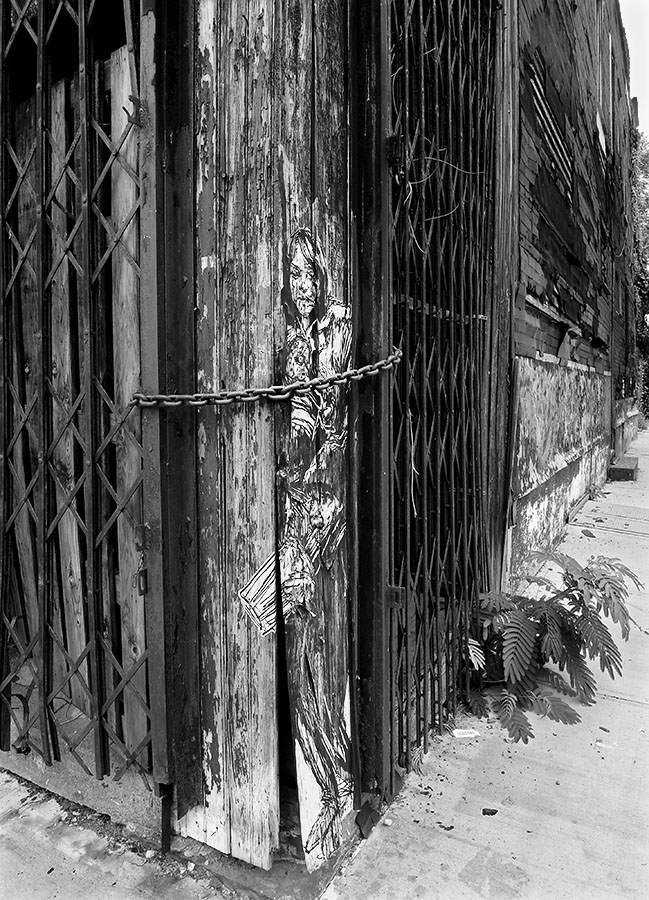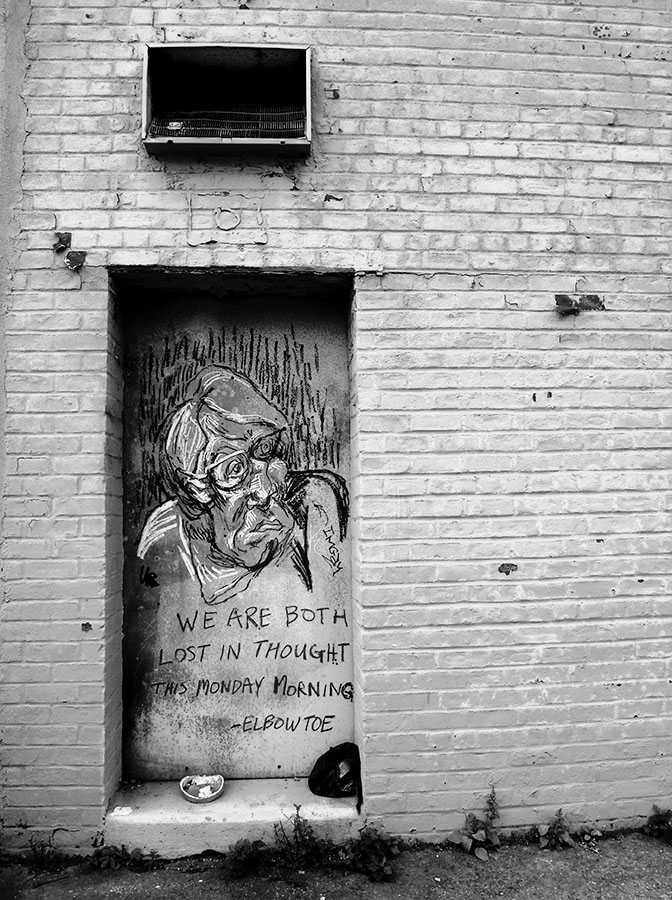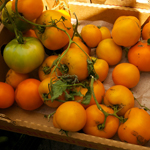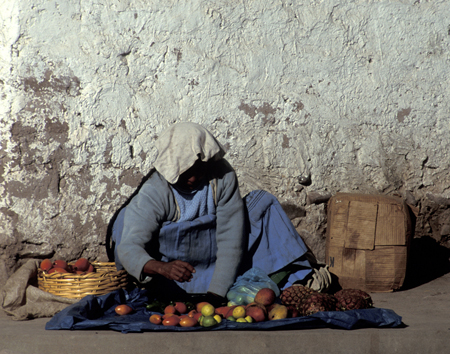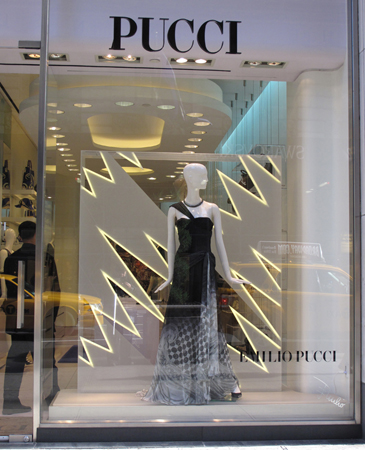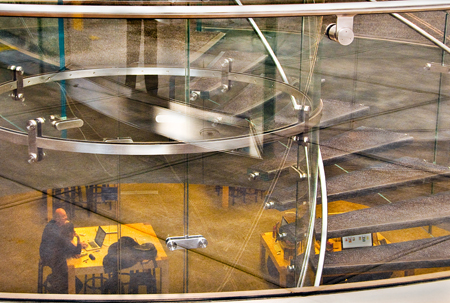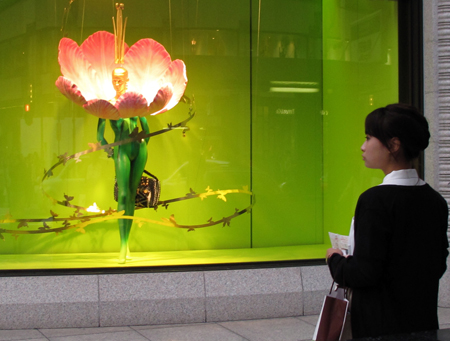Tag Archives: Katie Mantell
Time and the River
Time and the River
It was once a separate city, and in some ways, still is. It is 71 square miles and the most populous borough of New York. There are 136 different languages spoken, 93 ethnic groups, 150 nationalities, and a whole lot of artists. Serious artists. Sometimes we think of it as being far, but really it is just one more stop on the train. It’s that place on the other side of the river, Brooklyn, USA.
It has a lively arts scene and in March, 2011, Professional Women Photographers will be a part of it when their exhibition, Perspectives on Time, opens at the Callahan Center Gallery of St. Francis College. The gallery is conveniently located one block from the Borough Hall subway station, the very first stop in Brooklyn for the 2, 3, 4, 5, and R trains.
The exhibit promises to be exceptional in many ways. Not only is the space on the ground floor of the college, but it has enormous windows that look out on bustling Remsen Street (think exposure!), making it the most accessible, heavily trafficked space PWP has ever had. All types of photography-based work are eligible: color, black and white, film, digital, straight photography or alternative processes, photo collage and montage. Photographers can also create a triptych or a series of up to six photos in one frame to convey the theme, the passage of time.
Members can log into the PWP website using their e-mail and password, click on Events & Calls for Entry, then Calls for Entry, to download the Perspectives on Time prospectus. The deadline for submission is November 30th.
Here are some other interesting facts about the borough. It was named after the municipality of Breuckelen in Utrecht, Holland, and became part of New York City in 1898, fifteen years after the Brooklyn Bridge opened. PWP currently has 51 members who live there, and has exhibited there before. In February of 2001, a PWP show called A Spiritual Moment opened at…St. Francis College! Talk about moments of time-it’s déjà vu all over again!
To quote the motto of Brooklyn, Een Draght Mackt Maght – In Unity There is Strength! We want to put together a great show and are looking forward to seeing your entries! Please send them in by November 30th!
- Katie Mantell, Exhibitions Director
- Catherine Kirkpatrick, Archives Director
Hurry Up Please…
Hurry Up Please…
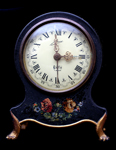 Almost every college student encounters, willingly or not, T.S. Eliot’s iconic modern masterpiece The Wasteland. In it there’s a phrase “hurry up please, it’s time.” A lot of hands go up to explain this, but almost everyone in this country gets it wrong. They think its an allusion to the quickening pace of the 20th Century or looming apocalypse, but it’s actually a common call heard in English pubs as closing nears and proprietors need to ease their merry customers home.
Almost every college student encounters, willingly or not, T.S. Eliot’s iconic modern masterpiece The Wasteland. In it there’s a phrase “hurry up please, it’s time.” A lot of hands go up to explain this, but almost everyone in this country gets it wrong. They think its an allusion to the quickening pace of the 20th Century or looming apocalypse, but it’s actually a common call heard in English pubs as closing nears and proprietors need to ease their merry customers home.
From the flow of sand through an hourglass to the speeding digital clock of 24, time marks our days. It is ever-present and universal, yet its measure and the terms used to describe it vary widely from culture to culture. It is at once precise and scientific, and yet extremely personal. We’ve all had moments that seem to slow or stand still, and other moments, even years, that fly by.
 As it figures in our lives, time and its passage figures largely in art. Music, dance, theater and film are all time-based, and while writing is loosely connected to time, writers manipulate it and suggest it in a variety of ways. Photography is tricky. We don’t necessarily associate still photography with time, but from subject matter, to the speed of a subject, to the speed of the shutter, photography invokes, involves and captures time. Edward Weston’s studies of knarled driftwood speak of endurance over the course of many years. Henri Cartier-Bresson‘s pictures embrace a shorter time frame, the decisive moment, in which a photographer can “fix eternity in an instant,” and Duane Michals‘ photo-sequences explore transformations that occur before the camera over a period of time. (The grandfather of photo sequencing was Eadweard Muybridge whose stop motion pictures of humans and animals in action were landmarks in both “still” photography and film).
As it figures in our lives, time and its passage figures largely in art. Music, dance, theater and film are all time-based, and while writing is loosely connected to time, writers manipulate it and suggest it in a variety of ways. Photography is tricky. We don’t necessarily associate still photography with time, but from subject matter, to the speed of a subject, to the speed of the shutter, photography invokes, involves and captures time. Edward Weston’s studies of knarled driftwood speak of endurance over the course of many years. Henri Cartier-Bresson‘s pictures embrace a shorter time frame, the decisive moment, in which a photographer can “fix eternity in an instant,” and Duane Michals‘ photo-sequences explore transformations that occur before the camera over a period of time. (The grandfather of photo sequencing was Eadweard Muybridge whose stop motion pictures of humans and animals in action were landmarks in both “still” photography and film).
Sometimes it’s the photographer who does the hustling. Ansel Adams was driving back from a disappointing shoot in New Mexico when he saw a scene of small houses, crosses and fields stretched out beneath the late clouds and pale, emerging moon. He rushed to set up his 8 x 10 view camera, but couldn’t find his light meter. Since he knew the luminance of the moon, he guessed the exposure, and took the shot. He didn’t get a second, because the sun had faded, plunging the entire scene into shadow. The picture, Moonrise, Hernandez, New Mexico, one of Adams’ most famous, is a moment both in and of time. It shows a specific moment in the American Southwest, but in the layout of earth and sky, and man’s smaller place in between, it touches on something deeper and universal.
In Professional Women Photographers’ upcoming show Perspectives on Time, we invite members to explore what time means to them. The show will be on display at the Callahan Center Gallery of St. Francis College from March 2nd to 31st, 2011, with a reception on March 9th from 6:30 – 8:00 pm. This is a large open space, a great place for PWP photographers to go big with their pictures. Pieces up to 40 inches on the longest side are welcome. The Exhibitions Committee has also relaxed framing requirements for this show. Frames can be black, white, silver or gold, and mats are not required. This is a great place to experiment and try new things!
To access the Perspectives on Time call, login into the PWP website as a member using your password, then chose “Events & Calls for Entry” from the horizontal menu, then “Calls for Entry” from the choices that drop down.
Whether time means progress or looking back, whether it is speeding forward or frozen still-whatever your interpretations, literal or poetic, we look forward to seeing them!
- Katie Mantell, Exhibitions Director
- Catherine Kirkpatrick, Archives Director
Preview of Coming Attractions
Preview of Coming Attractions
Last week, The Art of Commerce opened at the Manhattan Borough President’s Gallery with a stunning array of images. Interpretations of the theme ranged from fruit sold on the street to the big businesses that drive the world’s economy. The show is on view at the Municipal Building, 1 Centre Street, 19th Floor through October 29th (bring picture ID). The Art of Commerce was also mentioned in the London Independent Photography blog.
The Exhibitions Committee has some other exciting shows planned for this year and 2011!
A call has gone out for New Visions, an exhibition that will be held at the Durst Gallery in Manhattan. The show is unthemed, so it is an opportunity for members to show their best current work. L.L. Powers, the gallery director, will curate. Submissions are due October 31st.
Looking ahead, we have a show scheduled for March 2011 at St. Francis College in Brooklyn. The gallery is one block from the Borough Hall subway stop and is very easy to get to. It is a ground floor space with plenty of room and windows onto the street. It is extremely visible. Stay tuned-the call will go out in the next month.
We look forward to seeing your work!
- Katie Mantell, Exhibitions Director
- Catherine Kirkpatrick, Archives Director
Commerce and Our Environment
Commerce and Our Environment
The idea of commerce often brings to mind goods that are bought and sold-concrete objects that have been manufactured and traded. Everyday, from the first sip of coffee to the purchase and swipe of a metro card, we experience how commerce touches our lives. But commerce also shapes our physical world. From the dawn of human history, towns and port cities have sprang up in places that facilitated trade: New York with its harbor and rivers, Istanbul along the once famed Silk Road.
Many of the great voyages in the Age of Discovery were undertaken in the hope of opening new trade routes to the Orient. Trade has driven a huge portion of human endeavor. We thrive when it is open and healthy, suffer when it falls off. We pay a huge amount of attention to it, encourage and accommodate it; we build plants and factories to facilitate it, flattening, paving over, and polluting natural resources to stoke our growing economy.
A number of photographs in PWP’s Art of Commerce illustrate how commerce has affected our environment. A power plant framed by tall grasses provokes one to imagine our landscape prior to this industrialization. A figure carved into the wood of a post seems to want to reclaim the beauty that was found in the original tree.
As our world develops, some argue that humans have gone too far, developed too much and taken too much from nature. But just when the world begins to look like a giant concrete canvas, stripped of all beauty, some artists are urged to take things into their own hands.
The Art of Commerce will be on view at the Office of the Manhattan Borough President Gallery, at 1 Centre Street, 19th Floor, New York, NY., from October 4 through October 29, 2010. Hours are Monday through Friday from 10 AM to 4 PM. There will be an opening reception Thursday, October 7th from 6 – 8 PM.
- Katie Mantell, Exhibitions Director
- Catherine Kirkpatrick, Archives Director
The Art of Commerce
The Art of Commerce
From pampered pooches to acquisitive ladies, from haute shops to no shops, next month at the Manhattan Borough President Gallery, PWP photographers focus on The Art of Commerce.
“Commerce is about buying and selling,€ said PWP President Maddi Ring, “but the word itself is far older than WalMart and Macy’s.€ The idea is basic and intrinsically human: a transaction, an exchange of goods and ideas, often to earn a living. The setting can be secondary, and sometimes geographical differences are irrelevant. The tomatoes photographed by Robin Glasser Sacknoff at an NYC green market have much in common with the fruit being sold in Maddi Ring’s picture taken in the Urubamba Valley, Peru. Both are fresh and locally grown; both present the buyer with a feast for the eye as well as the palate.
“I realized,” adds Maddi Ring, “how often in my travels to the third world I encounter people selling souvenirs on the street, necklaces from a blanket, etc. Recently in China I purchased a small lidded pot from a woman who seemed to have an entire store, including a calculator, inside the top half front of her dress!”
If every transaction has a buyer and seller and goods, it also has a place. And sometimes the setting is a crucial, almost equal partner in the sale. Companies who operate on Fifth Avenue and Madison Avenue do not lay their goods down in the dirt. A great deal of money is put into creating sleek, elite-feeling stores that are works of art themselves-temples for the experience of shopping. Shopping becomes a gateway to a higher lifestyle; it is about fantasy and aspiration. The merchandise, generally fabulous, is not essential for human survival. But what a thrill and feast for the eye!
While it isn’t a couture shop, you can’t help but notice that the Apple Stores are the epitome of cool, cutting-edge design, mirroring their sleek, elegant products.
In Their Own Words
In her series A Tokyo Girl, Rome-based PWP member Marina Misiti explores the idea of shopping as an experience:
“While traveling around the world with camera in hand, I often recorded a contemporary, global phenomenon, “woman’s time to shop.€ These images [part of the series] A Tokyo Girl, are about the art of shopping, and are part of a photo-book project focused on the Japanese female universe.
Despite a deep economic crisis, the Japanese young woman can shop every day, at any hour and I was fascinated by the transformation of this simple act of buying into a ritual. The Tokyo Girls series is an exploration of contemporary city life from a female perspective. I like working inside-the-scenes to create images that stimulate our senses and thoughts, and capture the fleeting moment. Living as a local in Japan, I felt the energy of this amazing city flowing through lights, colors and details we don’t usually see.
Living in Rome and having traveled as a freelance photojournalist to various spots in Europe, the US, Central and South America, Asia and Africa, I’ve had the great advantage of experiencing…many places, people and cultures. How can one engage with the environment if one can’t engage meaningfully with the people? I do hope that my subjects’ stories, told through my photographs, can begin to break down our boundaries between self and other, countries and cultures, and becoming involved in PWP’s American network is a part of that.”
The Art of Commerce which features 74 photographs by 28 photographers will be on display at the Manhattan Borough President Gallery, 1 Centre Street – 19th Fl, NYC, from October 4th – October 29th, 2010.
Katie Mantell, Exhibitions Director
Catherine Kirkpatrick, Archives Director


